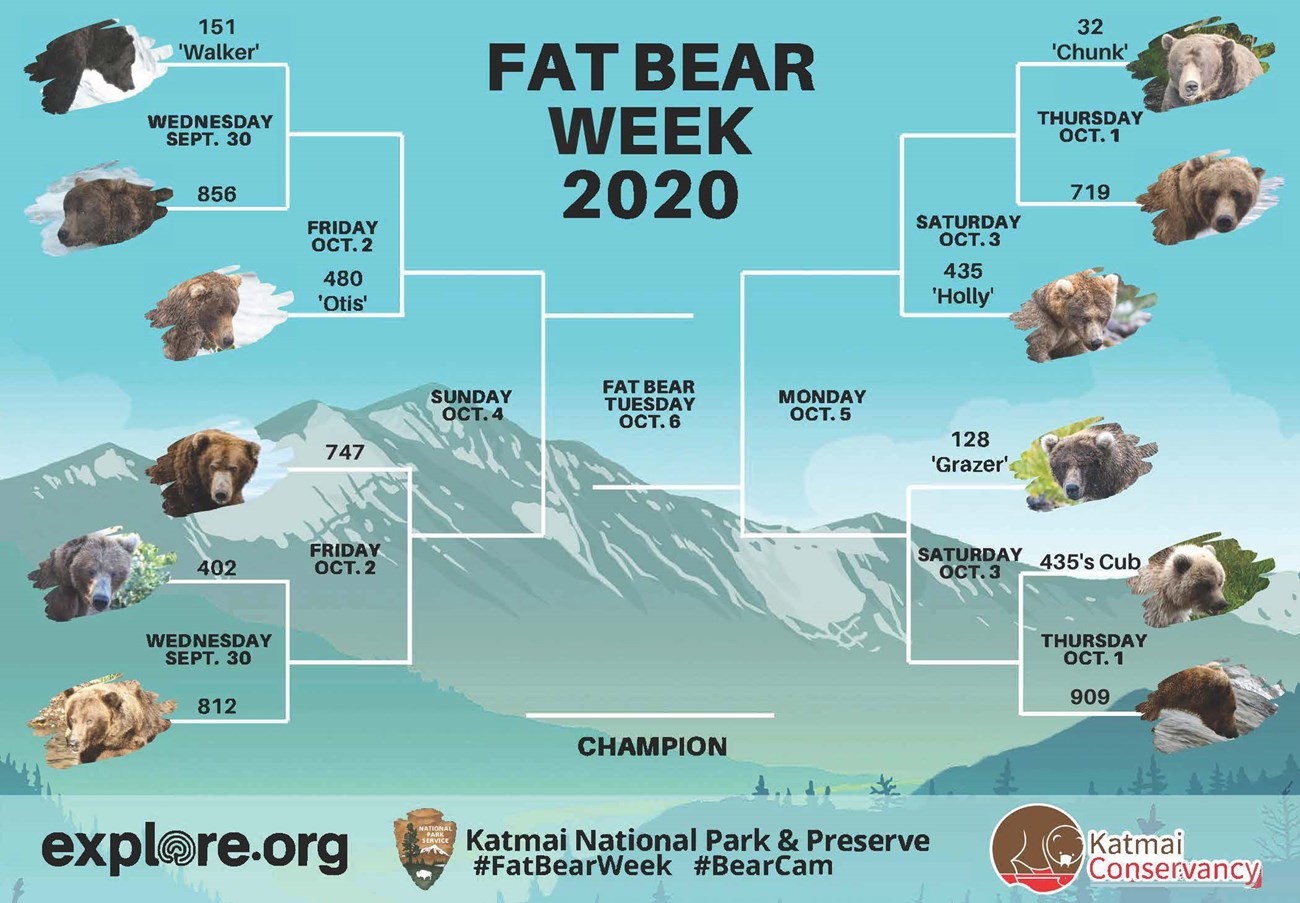
NPS Why are fat bears important?Each winter, curled snug in their dens, brown bears endure a months-long famine. During hibernation, bears will not eat or drink and they will lose one-third of their body weight. Their winter survival depends on accumulating ample fat reserves before entering the den. Katmai’s brown bears are at their fattest in late summer and early fall after a summer spent trying to satisfy their profound hunger.Each bear faces its own challenges in order to gain the body mass necessary to survive. Adult males need to grow large to dominate the best fishing spots and secure mating opportunities. Female bears need to gain weight for their own survival as well as to support the birth and growth of cubs. Bear cubs experience the same hunger as older bears but also undergo tremendous growth spurts. Juvenile bears living on their own for the first time must navigate a gauntlet of hazards to establish a home range and find food without mother’s guidance. Bears gorge on the richest, most easily obtainable foods they can find. In Katmai National Park, that most often means salmon. Dozens of bears gather at Brooks River to feast on salmon from late June until mid-October. Perhaps no other river on Earth offers bears the chance to feed on salmon for so long. Fat bears exemplify the richness of Katmai National Park and Bristol Bay, Alaska, a wild region that is home to more brown bears than people and the largest, healthiest runs of sockeye salmon left on the planet. Competitor LineupSide-by-side comparisons are useful to get a feel for just how much these bears have changed from Spring to now, but we're pleased to bring you slider comparisons to bring that comparison before you in an even more vibrant way.Bears are presented in numerical order with their slider, a brief summary of how to identify the bear and a history of the bear. Prepare yourself for casting your votes throughout the Fat Bear Week competition, Wednesday, 9/30, through Tuesday, 10/6. Bear 32 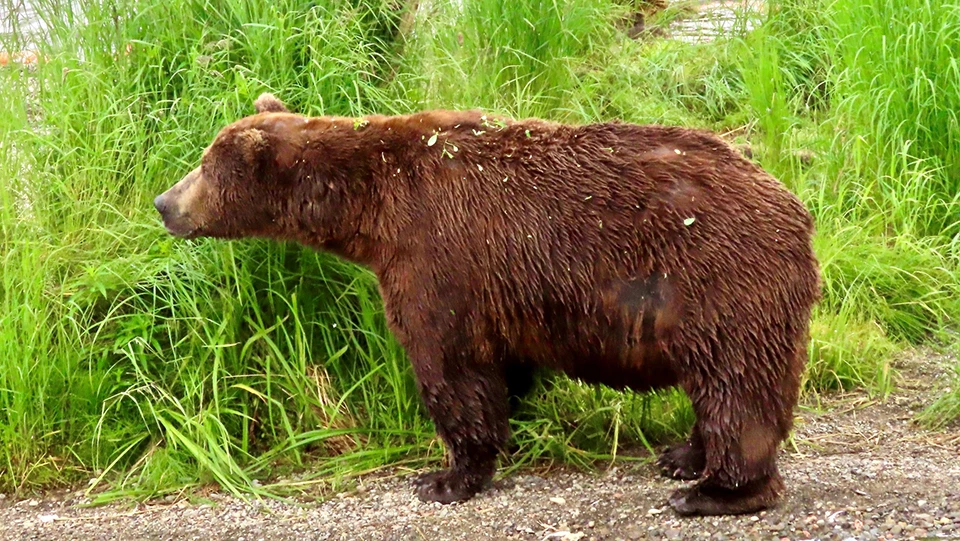
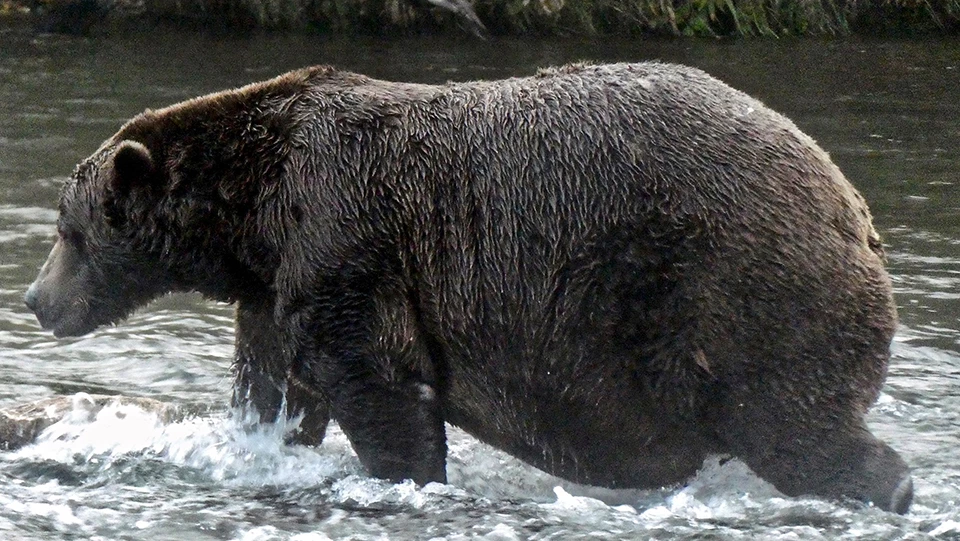
Left image
Right image
IdentificationBear 32 "Chunk" is a large adult male with narrowly-set eyes and a prominent brow ridge. Even at his leanest, Chunk carries substantial fat reserves, especially on his hind quarters. In early summer he tends to shed much of the fur around his shoulders and neck. This gives him a two-toned appearance and exposes numerous scars and wounds. By late summer, his newly grown fur is dark brown.Life HistoryChunk was first identified in 2007 as an independent, and chunky-looking, two and half year-old bear. Since then, he’s grown to become one of the largest adults at Brooks River. He was estimated to weigh more than 1,100 pounds (500 kg) in September 2019.Due to his size and strength, Chunk now occupies the top tier of the bear hierarchy. This allows him greater access to mating opportunities and fishing spots. Like most large bears, Chunk is not hesitant to displace others from the resources he wants. However, his behavior can also be enigmatic. In recent years he’s shown a tendency to wait patiently to scavenge leftover salmon and even play with other bears. These are two uncommon behaviors for a dominant bear to display. Due to his size and strength, 32 Chunk is poised to take advantage of opportunities not available to most other bears. Yet, it is only by observing his full range of behaviors that we can get a true sense of his individuality. Bear 128 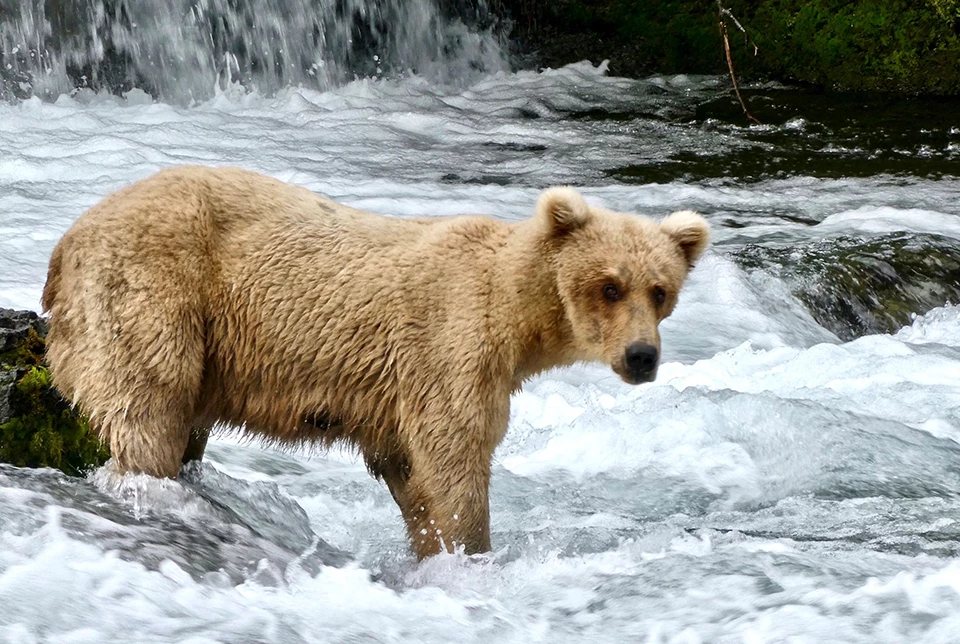
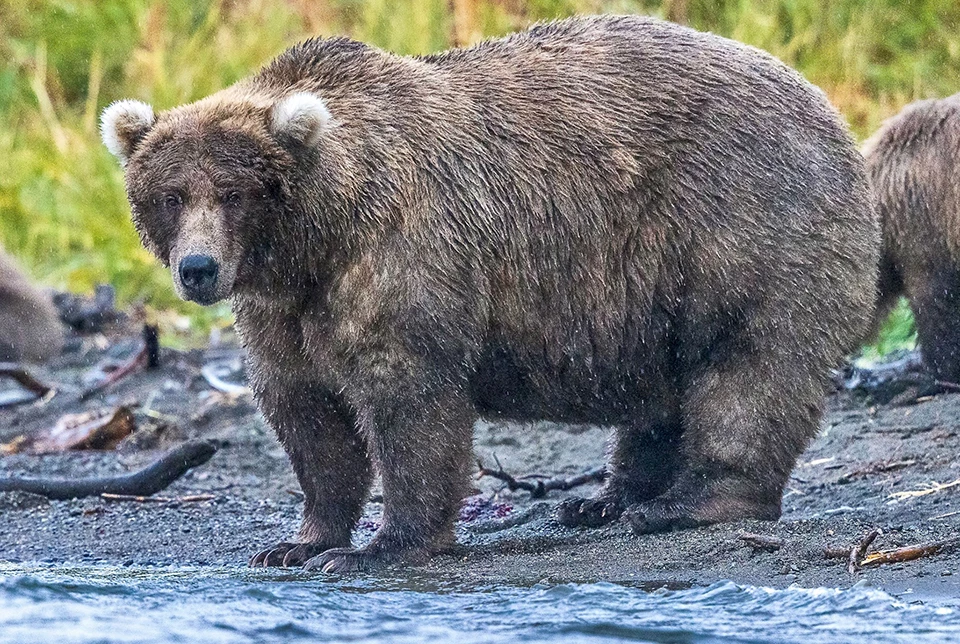
Left image
Right image
IdentificationBear 128 "Grazer" is a large adult female with blond fur, a long straight muzzle, and conspicuously large blond ears. During late summer and fall, her fur is grizzled brown and she is often one of the fattest bears to utilize Brooks River.Life HistoryGrazer was introduced to Brooks River as a young cub in 2005. Since then, she’s become one bearcam’s most recognizable bears. She can fish successfully in many locations, but in early summer she prefers the lip of Brooks Falls where she’s an especially skilled angler. In early fall, Grazer is more cryptic and most often chooses to fish in areas of the river away from the bearcams.Grazer is one of the most defensive mother bears at Brooks River. She often preemptively confronts and attacks much larger bears, including some of the river’s most dominant adult males, in order to ensure her cubs are safe. Her defensiveness is risky, yet provides her with access to areas of Brooks Falls that many other mother bears won’t approach. During 2020 she’s raising two spring cubs who benefit from their mother’s boldness in the face of danger and competition. Bear 151 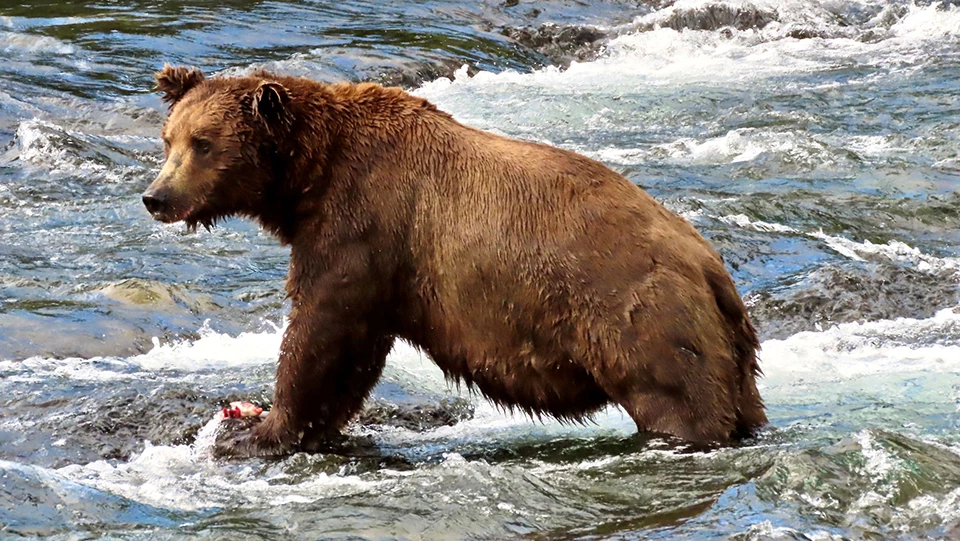
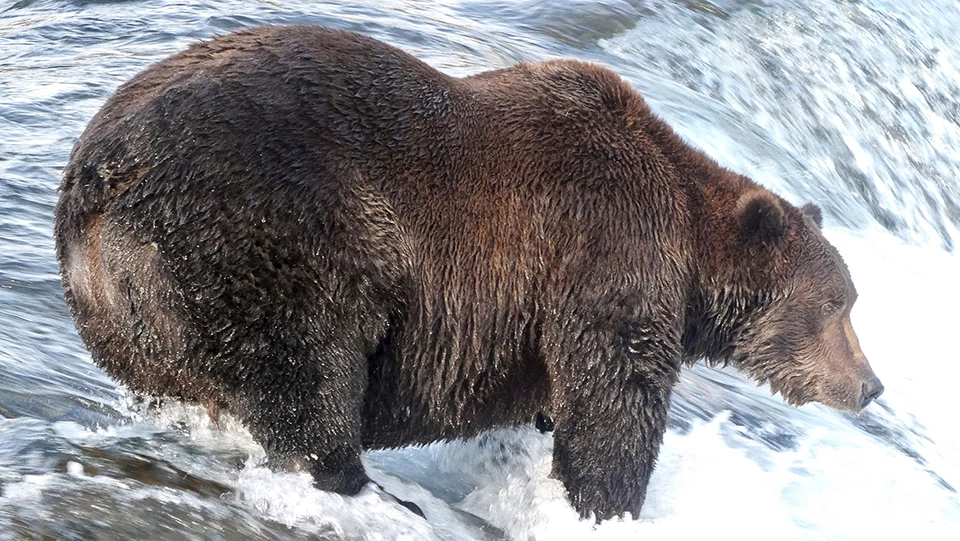
Left image
Right image
IdentificationBear 151 "Walker" is a large adult male. He has a skinny muzzle and widely spaced, upright ears. In early summer he has prominent dark eye-rings, and in late summer his fur is dark brown.Life HistoryWalker was first identified as an independent two and half year-old in 2009. He’s a frequent user of Brooks Falls, and he especially prefers to fish in the far pool and on the lip.During most of his young adult years, Walker remained a tolerant bear. He would allow other bears to approach him and he would seek out sparring partners for prolonged play fights. As a fully grown adult, Walker’s priorities have changed. Walker now ranks among the river’s largest bears and he’s become less tolerant of other bears, including some of his former playmates. With his increased body size and a more assertive disposition, Walker is has become a more dominant bear compared to his younger days, which demonstrates that the behavior of bears can vary considerably over their lifetimes. He was estimated to weight almost 1,200 pounds (545 kg) in September 2019. Bear 402 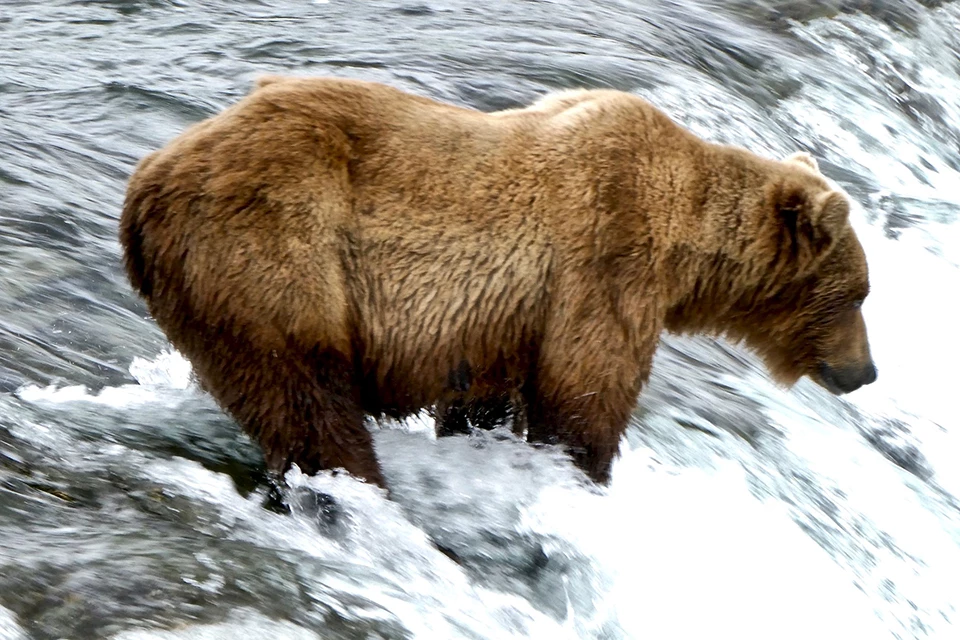
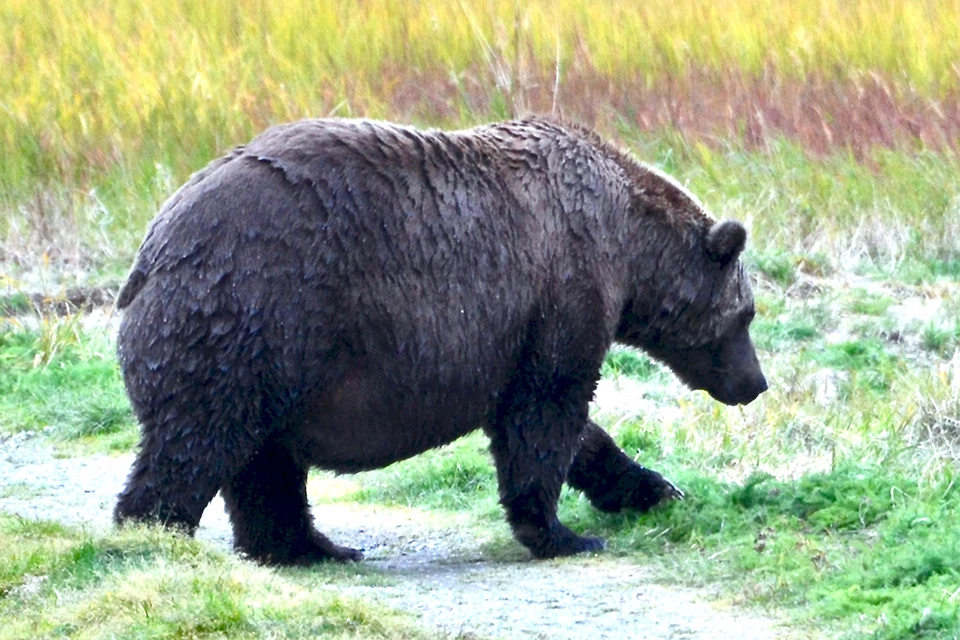
Left image
Right image
IdentificationFour-oh-two is one of the largest adult females at Brooks River. She has medium brown fur, tan-colored claws, and crescent or apostrophe-shaped ears. During years when she is not caring for cubs, she is also quite fat in late summer and fall.Life HistoryFew bears can rival 402’s maternal experience. Four-zero-two is the mother of at least seven litters, more than any other bear currently at Brooks River. This includes two litters of four cubs apiece. Four-zero-two’s life illustrates the difficulties of raising cubs in a harsh and competitive environment.While she has successfully weaned many cubs, some of which still visit Brooks River, she’s also experienced many hardships including the loss of entire litters. When a mother bear loses her litter in spring or early summer, it can trigger her to become receptive to mating once again. This explains why 402 bore litters in back-to-back years such as 2007 and 2008. It’s her fishing skills and ability to get fat, however, that has the most impact on her reproductive rate. Since bear cubs are born in the den while the mother hibernates, female bears need ample fat reserves to support the birth and growth of their cubs during a season when mothers do not have access to food or water. Four-zero-two is a skilled angler especially on the lip of Brooks Falls. She is also an efficient scavenger of dead and dying salmon in the lower Brooks River. She was single in 2020 and with her current fat reserves she is perhaps well positioned to support another litter of cubs this winter. Bear 435 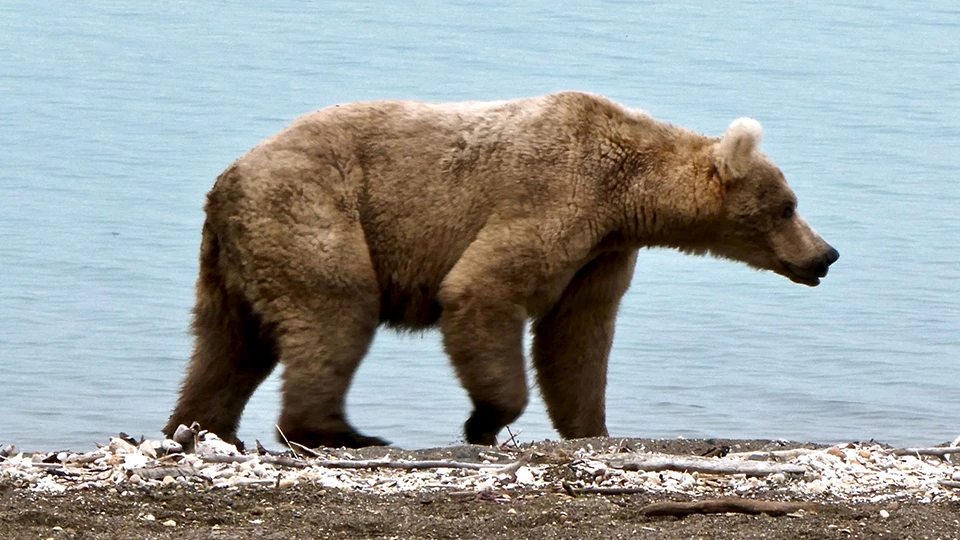
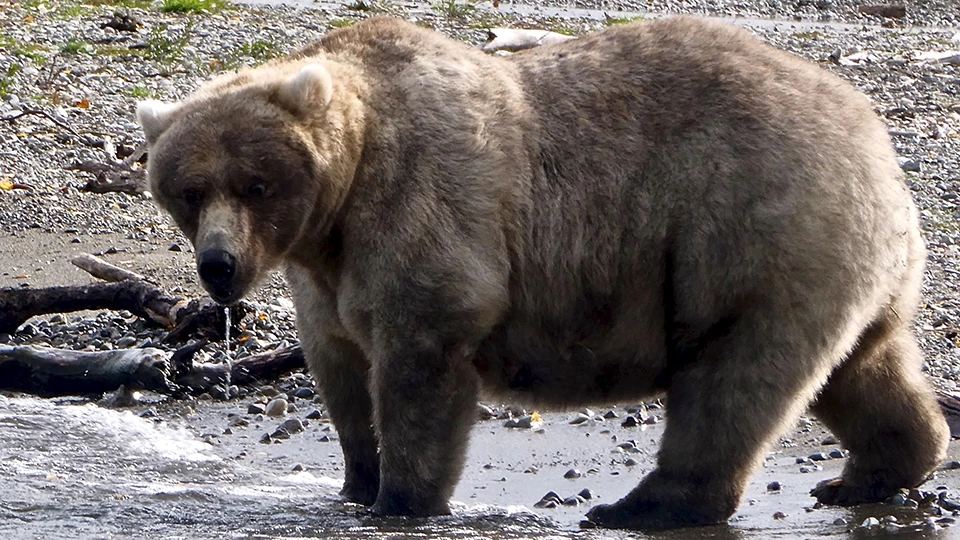
Left image
Right image
IdentificationIn early summer, Bear 435 "Holly" is a medium-large adult female with blond ears, blond fur, and pale, tan-colored claws. By early autumn, she is usually very fat with grizzled blond fur. Her appearance at that time somewhat resembles the shape and color of a toasted marshmallow.Life HistoryWhen she was first identified in 2001, Holly was just maturing into an adult. Since then, she has reared several litters of cubs and in the process has become one of the more experienced and tolerant mother bears at Brooks River.Her maternal experiences haven’t been without hardship. When Holly and her single yearling arrived in 2007, the yearling had a pronounced limp. Despite the difficulties that accompanied her yearling’s injury, Holly was able to successfully care for him. The yearling’s leg healed by the end of summer and he was weaned the following spring. This bear, now known 89 Backpack, still uses Brooks River. In 2014 Holly adopted a lone yearling cub into her family. Holly cared for and raised this bear alongside her biological cub, weaning them both in the spring of 2016. Each bear is now a young adult. In 2020, Holly returned with a single spring cub that represents her fifth known litter. Holly’s cubs have challenged her maternal skills in different ways, and she’s demonstrated the ability to adapt to their needs. She was the 2019 Fat Bear Week champion. Bear 435's Spring Cub 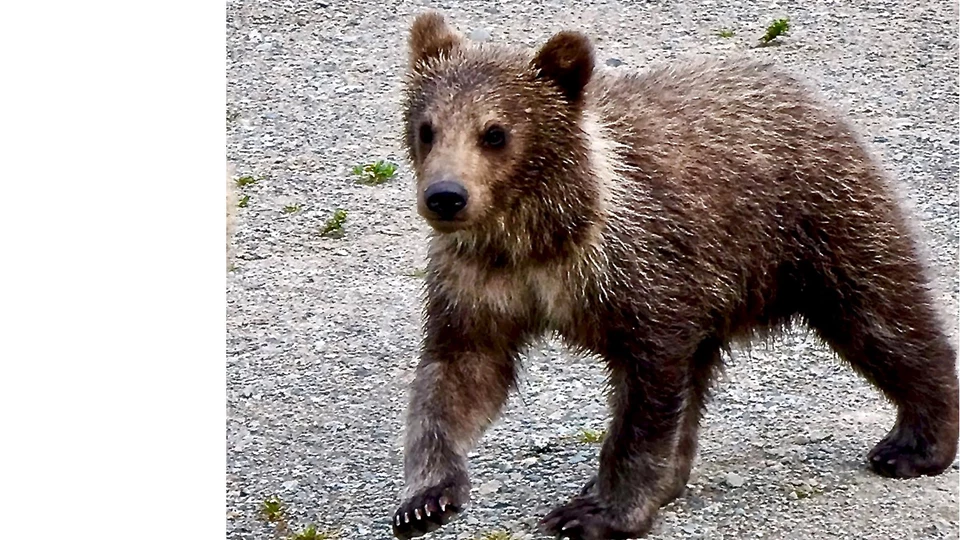
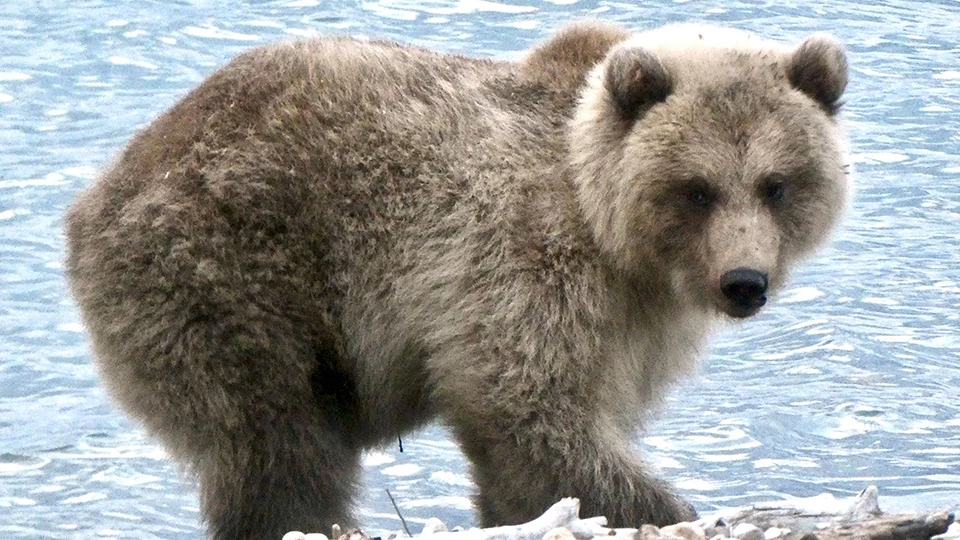
Left image
Right image
IdentificationThis first-year female cub has a grizzled blond fur and a curious and playful demeanor.Life HistoryHolly’s spring cub has benefitted from her mother’s experience in finding food. When she was born in late January or early February, the cub weighed a mere pound (.45 kg) but has grown to weigh well over 60 pounds since then. Like her mother, she’ll utilize her fat reserves to survive winter hibernation. Only newborn cubs nurse in the den.With ample salmon available in Brooks River this year, many bear families have come in close contact near the river mouth. Holly’s cub expressed curiosity toward other bear families and sometimes was able to play with cubs from other litters. Her curiosity hasn’t always led to reward though. In early September, she encountered a porcupine and has since suffered from quills stuck in the bottom of a front paw. The quills do not seem to bother the cub while she swims, but on land she is hobbled and avoids placing weight on the injured paw. Holly’s cub is well positioned to completely recover from the injury caused by porcupine quills, and she’s already shown improvement in mobility. As this cub has shown, the life of a spring cub contains risk as well moments of joy. Bear 480 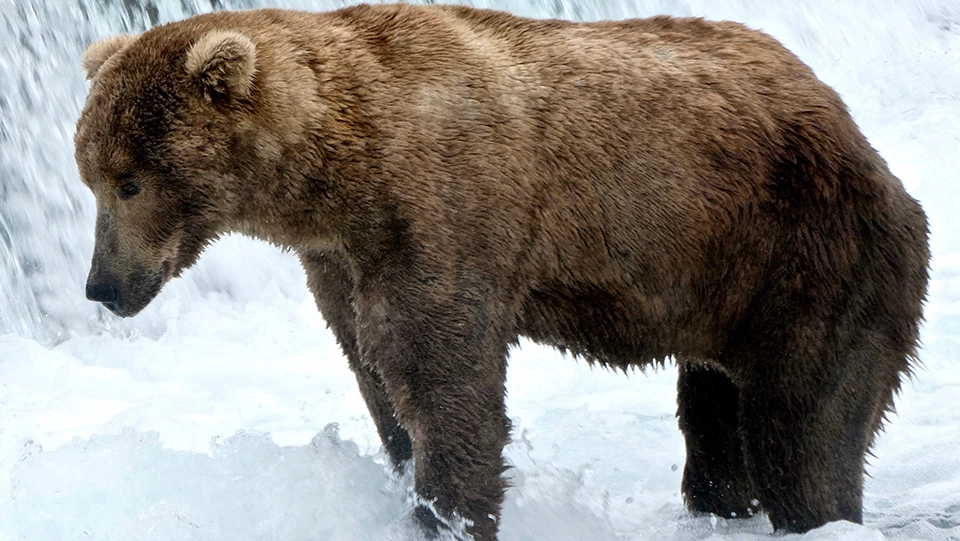
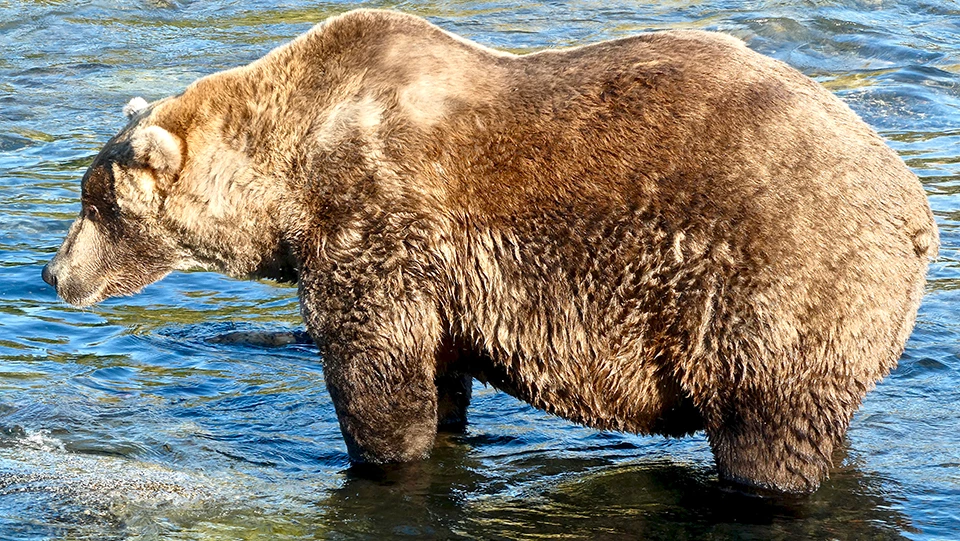
Left image
Right image
IdentificationBear 480 "Otis" is a medium-large adult male with blond and brown fur in early summer. By autumn, his coat becomes grizzled in appearance and he sports a patch of lighter fur on his left shoulder. He also has a floppy right ear.Life HistoryOtis is a master of patience and efficiency, especially in his preferred fishing spots like the jacuzzi and far pool. He rarely makes an effort to chase salmon like younger, more energetic bears. While Otis occasionally appears to be napping or not paying attention, most of the time he’s extremely focused on the water.Otis must compete with larger bears while coping with the signs of aging. He was around four to six years old when he was first identified in 2001, which means he’s now one of the oldest bears at Brooks River. As bears age, they experience a variety of ailments and Otis is no exception. In particular, he is missing two canine teeth and many of his other teeth are quite worn. Otis is forced to compete with younger and larger males who want the same access to fishing spots. Now well into his third decade of life, Otis is more likely to be displaced by these bears than he is to displace them. Still, he recognizes that patience is a winning strategy. Once access to his preferred fishing spots becomes available, he takes advantage of the opportunity while expending little energy. He was estimated to weigh more than 900 pounds (409 kg) in September 2019. He was the inaugural Fat Bear Tuesday champion in 2014 and Fat Bear Week champion in 2016 and 2017. Bear 719 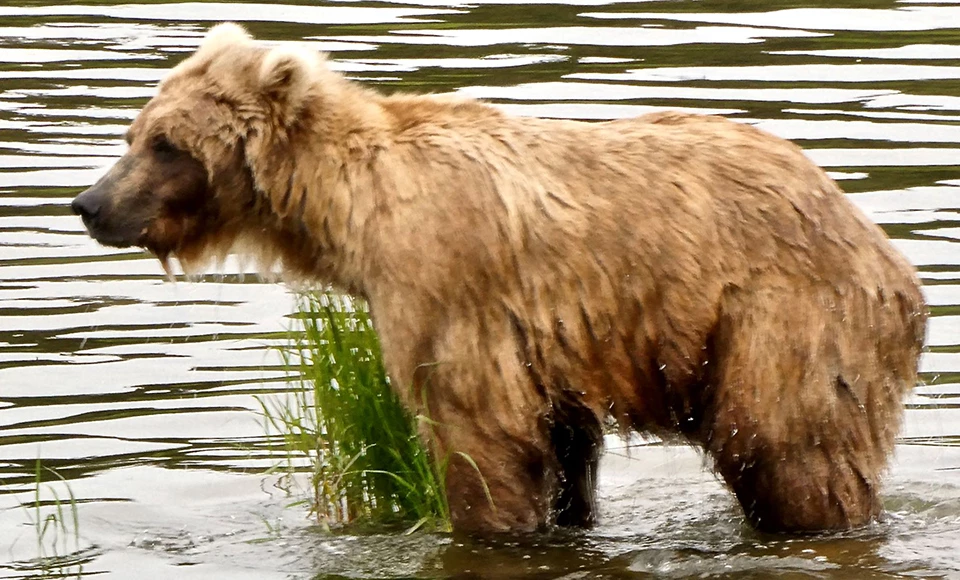
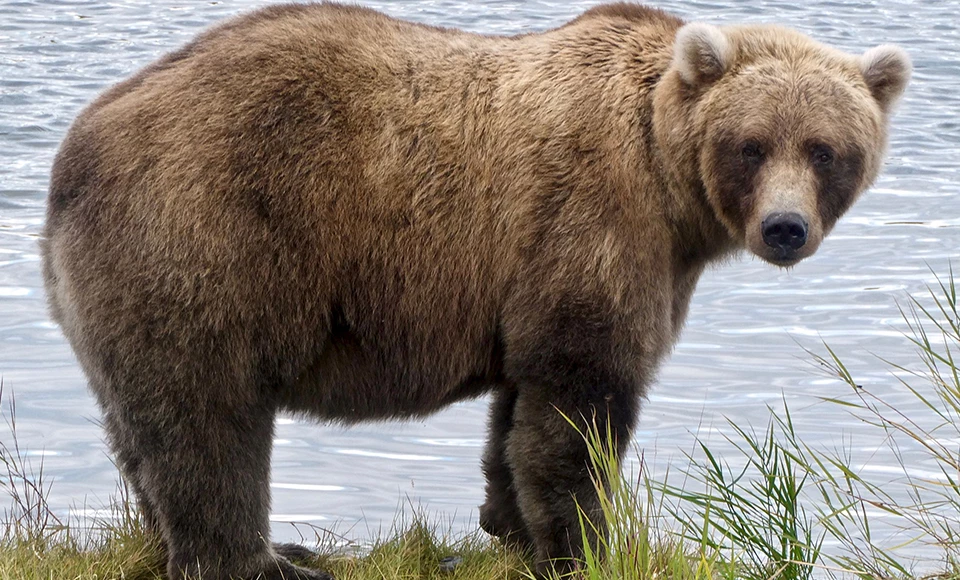
Left image
Right image
IdentificationSeven-one-nine is a young adult female with shaggy blond fur, a dark face, and tan-tipped claws. In the fall her coat becomes dark blond, but she retains light blond ears. At this time, she closely resembles her mother, 435 HollyLife HistoryAlthough brown bears are often described as a solitary species, they do not live completely solitary lives. Seven-one-nine was born in 2014 and remained with her mother through two summers. Her family life included her mother’s adoption of 503, and she played frequently with her adopted brother. During her first summer as an independent bear in 2016, she seemed to show a reluctance live by herself and began to associate quite closely with 402 and her yearlings. Although 719 was never accepted by 402 into the family, the circumstances permitted 719 a greater level of security and perhaps peripheral access to areas she may not have been able to use otherwise. Through the rest of her subadult years, she remained social, frequently playing with other similarly aged bears.In 2019 she returned with two cubs. This year, while still raising yearling cubs, 719 played occasionally with other non-related young bears. This is an extremely rare behavior for a mother bear to express. Seven-one-nine shows that bears are sometimes reluctant to shed the sociality of their youth. Bear 747 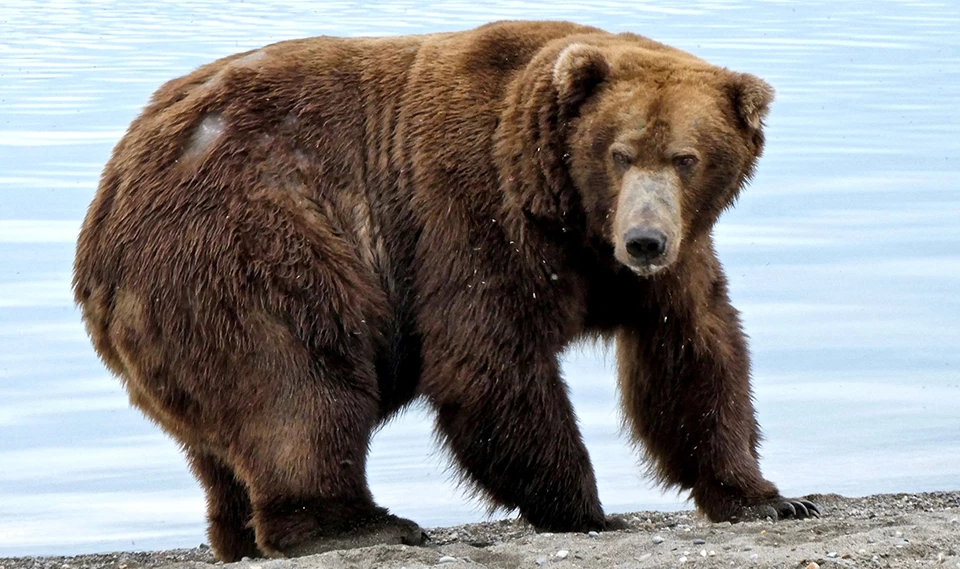
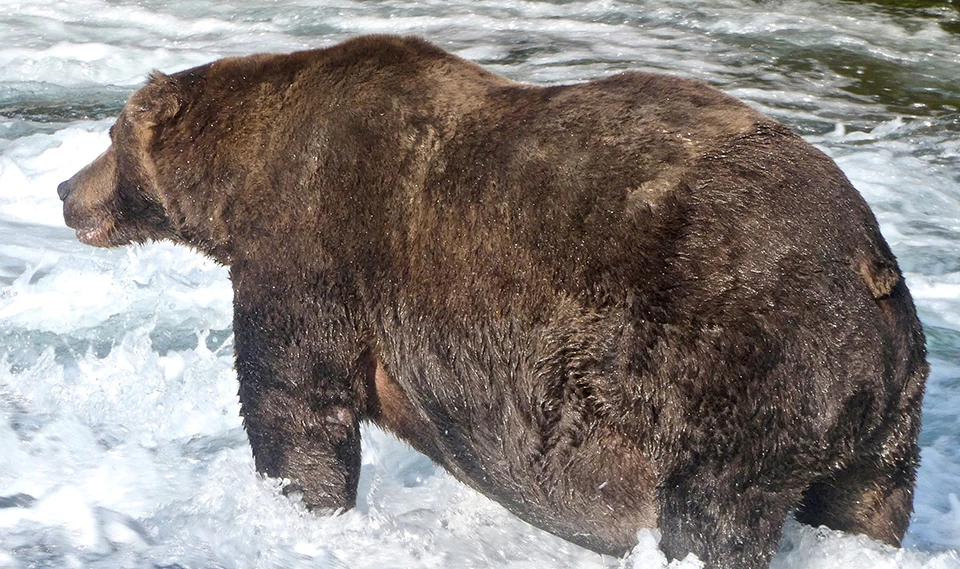
Left image
Right image
IdentificationSeven-four-seven is a very large adult male with wide-set, peg-like ears and a blocky muzzle. In early summer, his reddish-brown fur sheds in a patchy manner. Like many adult males, he often has scars and wounds on his face and neck. In late summer and fall, he is typically very fat with a low-hanging belly and uniformly dark brown fur.Life HistoryFew brown bears ever grow as large as the bear who shares an identification number with a jet airplane. When 747 was first identified in 2004, he was a relatively young bear, only a few years old and unable to compete with larger bears for the most preferred fishing locations. Since then, he has grown to become one of the most dominant bears at Brooks Falls.Seven-four-seven is a skilled and efficient angler. He’s found most often in the jacuzzi or the far pool. Only rival males of comparable size, of which there are very few, can challenge him for fishing spots. Although dominant bears can maintain their rank in the hierarchy through aggression, 747 typically keeps his status by sheer size alone. Most bears recognize they cannot compete with him physically and they yield space upon his approach. He was estimated to weigh more than 1,400 pounds (636 kg) in September 2019 and he looks to be at least that big this year. Bear 812 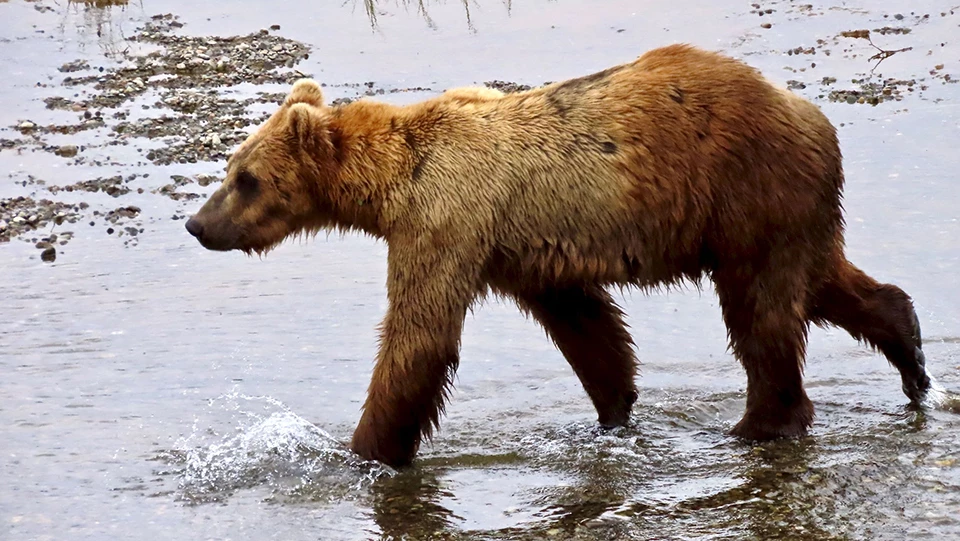
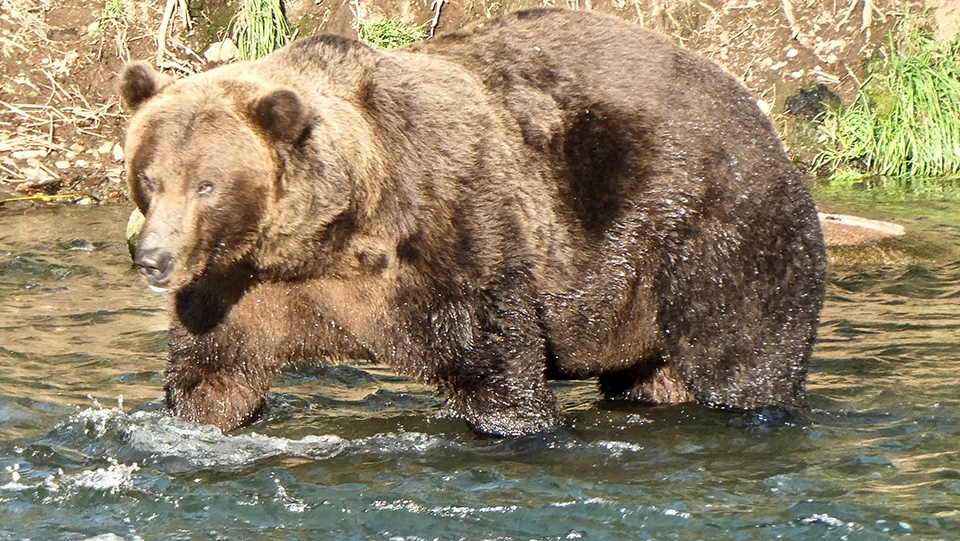
Left image
Right image
IdentificationEight-one-two has grizzled brown fun and crescent shaped ears. He closely resembles 503, an older brother. Behaviorally, 812 can be identified by his tendency to lick his lips frequently and use rocks as a platform to eat salmon. He also will often extend a front leg forward when fishing on the lip of the falls.Life History812 is a quickly growing young adult male. He was first identified as an independent two year old bear in 2017. He prefers to fish the lip and near the far pool of Brooks Falls.So far in his life, 812 has remained tolerant of other bears and he’s often seen playing with or fishing near other young adult bears. He also seems willing to test the tolerance of larger, more dominant bears. 812 will occasionally approach fishing spots at the falls already occupied by larger bears. Other bears seem to recognize he is not likely to act aggressively toward them or pose a physical threat. This can give 812 greater access to productive fishing spots at the falls. He is believed to be the offspring of 402. Bear 856 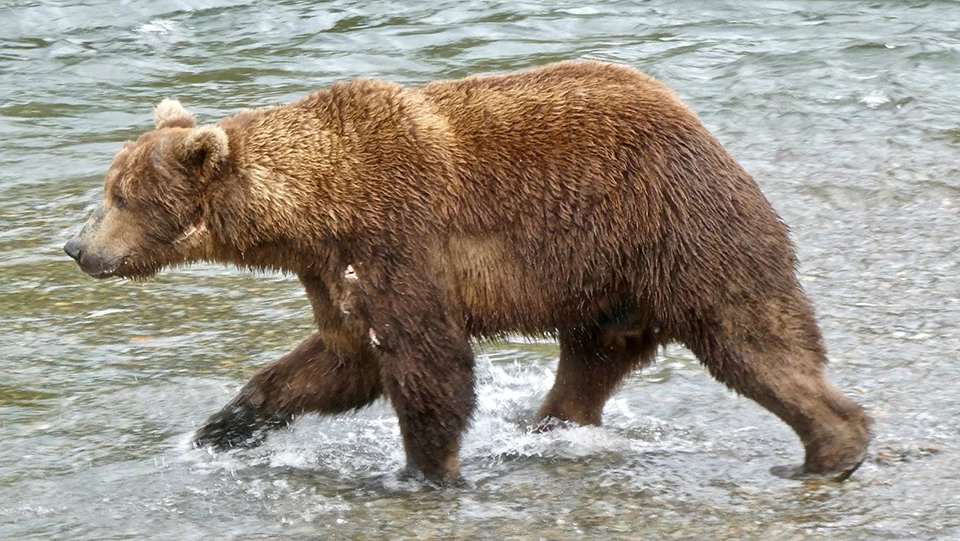
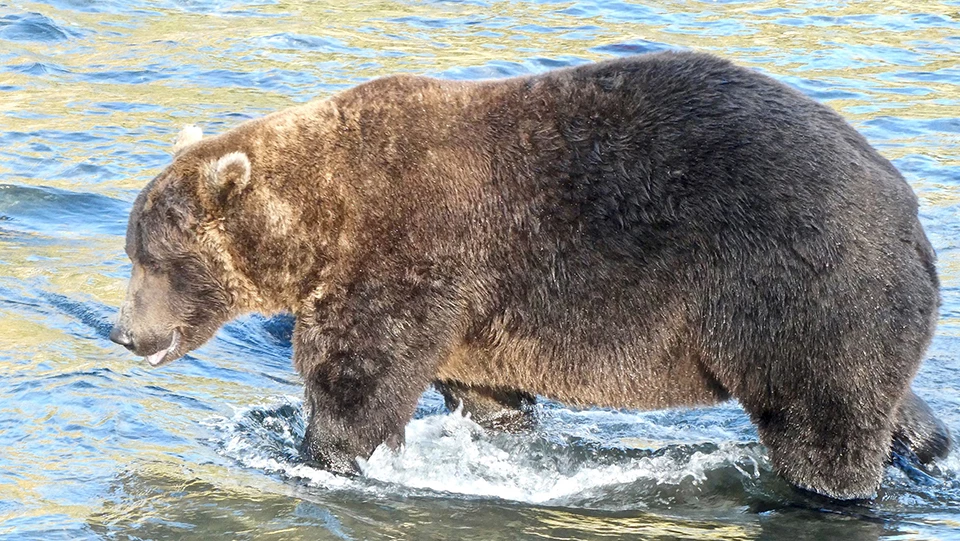
Left image
Right image
IdentificationEight-five-six is a very large adult male with uniformly brown fur and light-brown ears. In early summer, he has a noticeable stripe of thin fur running from his head to his back and numerous scars and wounds are visible on his head and neck. By late summer his fur is dark brown. Behaviorally, he is quite bold and assertive toward other bears.Life History856 was classified as a young adult in 2006. At the time, he had a relatively small body compared to older adults. He was frequently displaced by his larger competitors, some of whom also stole fish from him. He continued to grow and perfect his fishing skills over the next several years. As 856 reached his tenth or eleventh year of life, he suddenly became one of the biggest bears at the river with an assertive disposition equal to his size.856 has been the river’s most consistently dominant bear since 2011. He uses his size to intimidate other bears in order to gain access to food or potential mates. If that doesn’t work, 856 will fight and he’s apparently good at it too. Bears who have lost fights to 856 tend not to challenge him again. His status in the hierarchy is never assured though. He must maintain it. If he doesn’t, other bears will not hesitate to displace him. 856 does not shy away from conflict, but how much longer can he maintain his high level of dominance? Life at the top of the bear hierarchy is difficult. As he ages, 856 will increasingly experience tough competition from younger bears who want access to the same resources as he. Bear 909 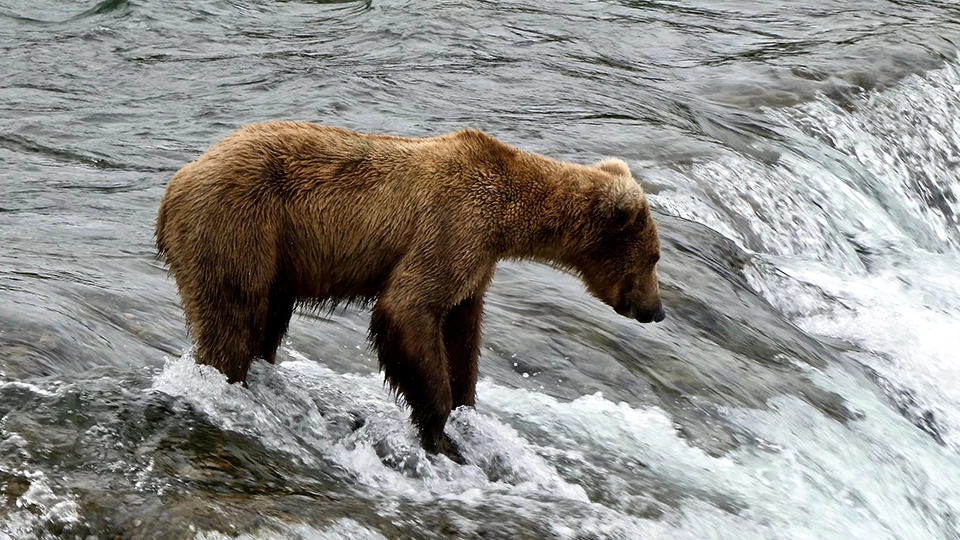
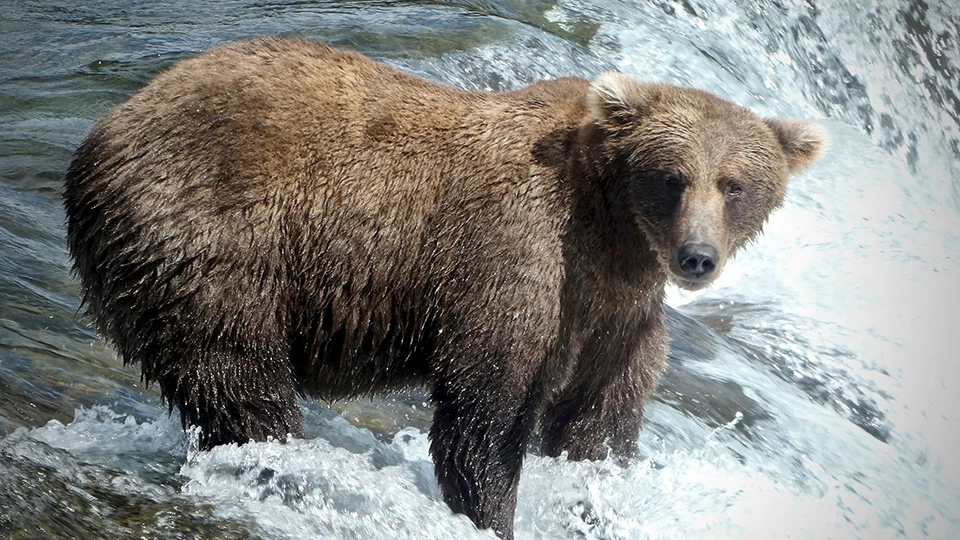
Left image
Right image
IdentificationNine-oh-nine is a young female with grizzled brown fur. Her blonde and triangularly shaped ears are prominent and wide-set.Life History909 was first identified as an independent two year old bear in 2018. She’s tolerant and playful of other bears, and she shares many behaviors with her mother and former Fat Bear Week champion, 409 Beadnose.After separating from their mother in the spring of 2018, 909 and her sibling 910 were hesitant to enter the falls area. Without mother’s protection, 909 recognized her vulnerability and low rank in the hierarchy. More recently though, she often fishes the lip of the falls during the peak of the salmon run. To fish the falls in early summer, 909 had to find a niche and overcome her fear of other bears. She watched her mother fish there and has since found that it offers a place for her to catch many salmon without facing as much competition for space from other bears. As she continues to grow and gain skill, 909 seems well positioned to use the lessons she learned with her mother to survive and eventually raise her own cubs at the river. Ready to vote?Now that you've seen all the competitors transformations over this season, don't forget to vote for your choice for Katmai's Fat Bear champion of 2020 by casting your vote! Check out the bracket at the top of the page to see each daily matchup from Wednesday, 9/30, through Tuesday, 10/6.*Identification and Life History text courtesy of our partners at explore.org. |
Last updated: October 1, 2020
